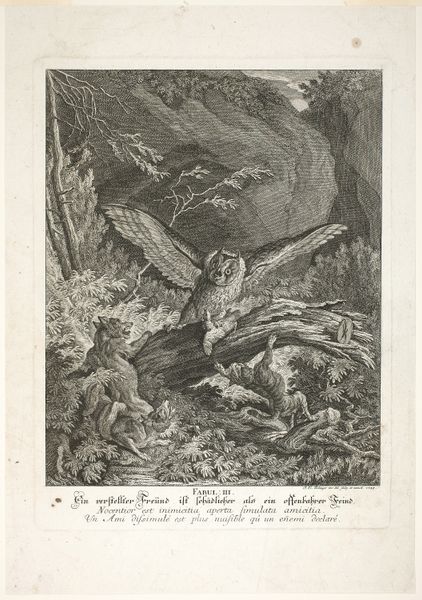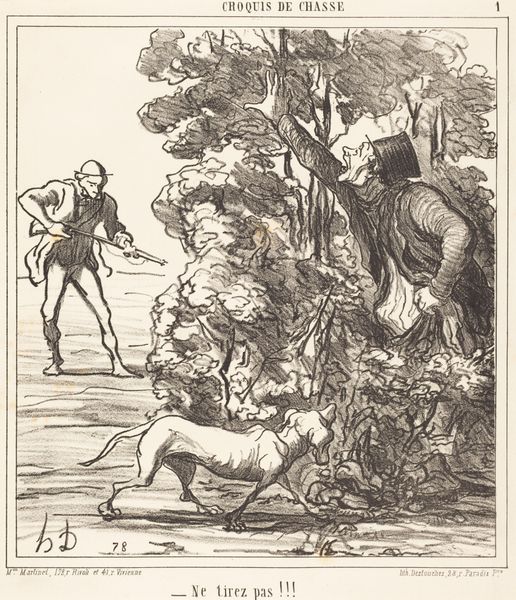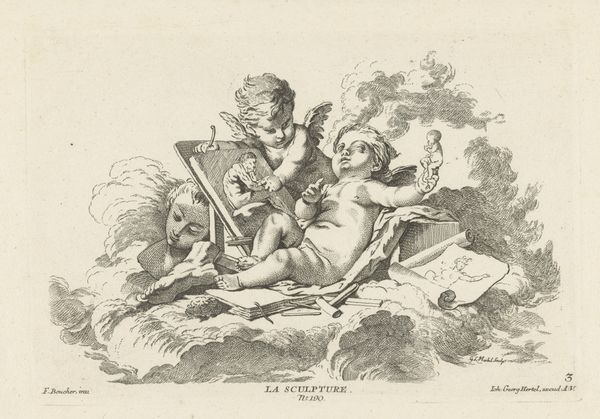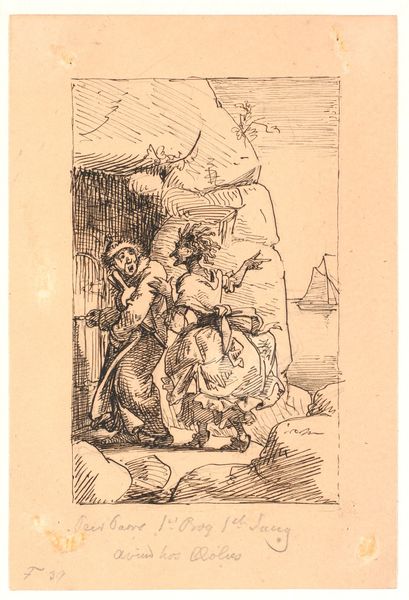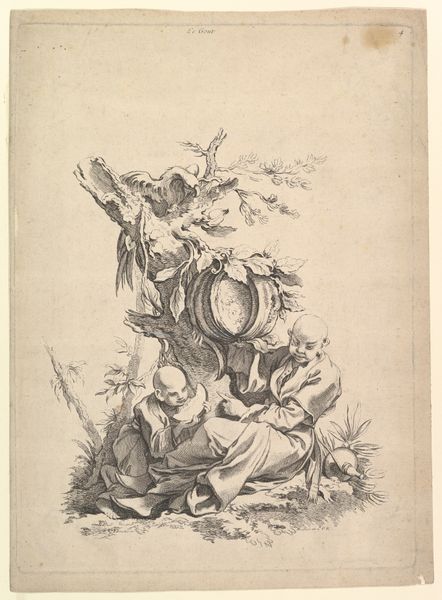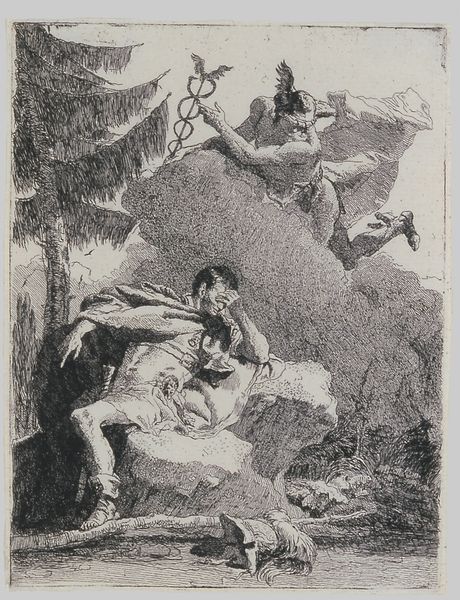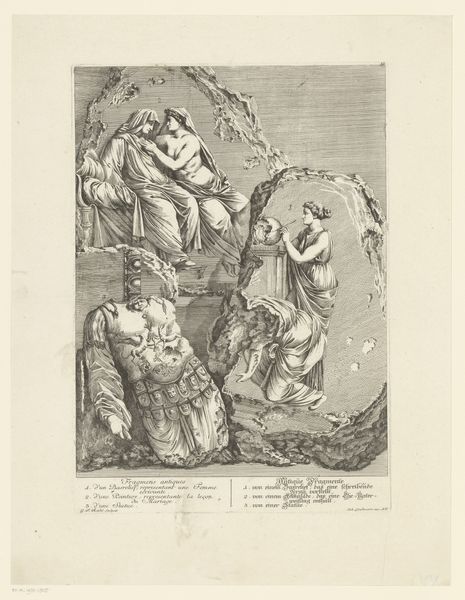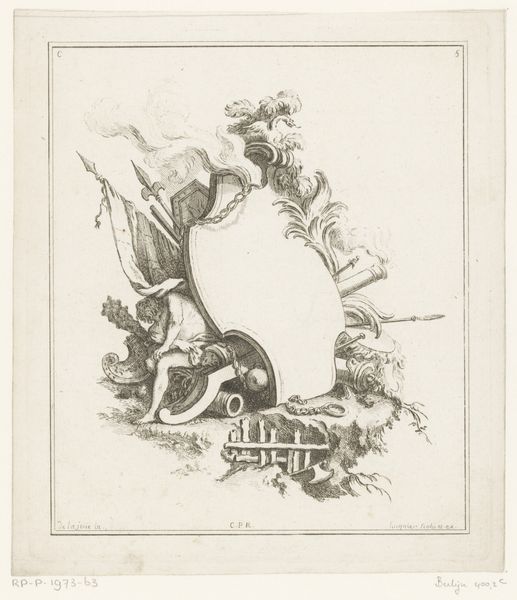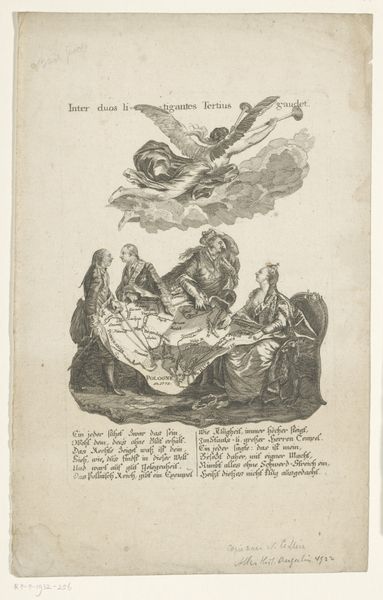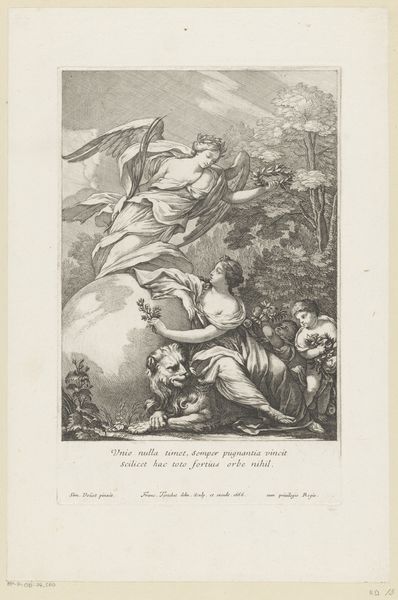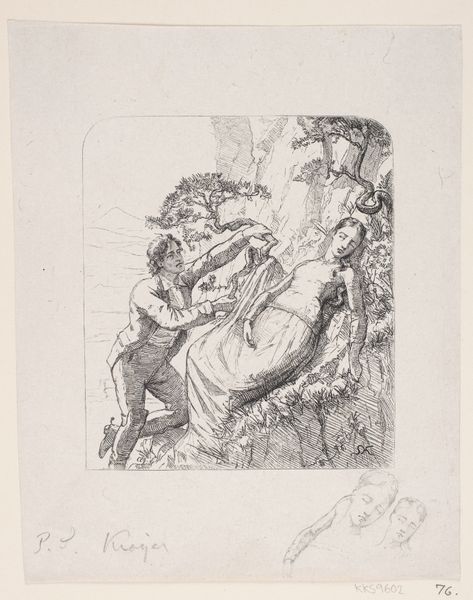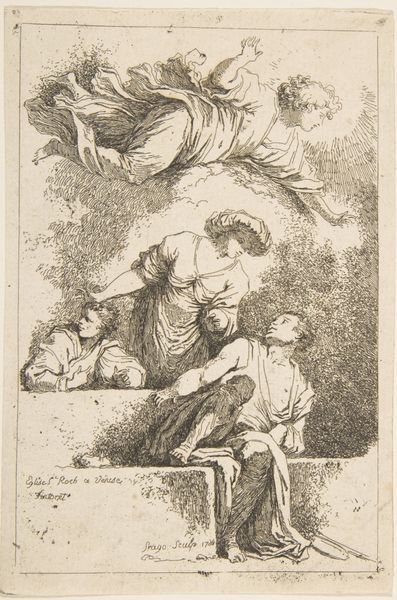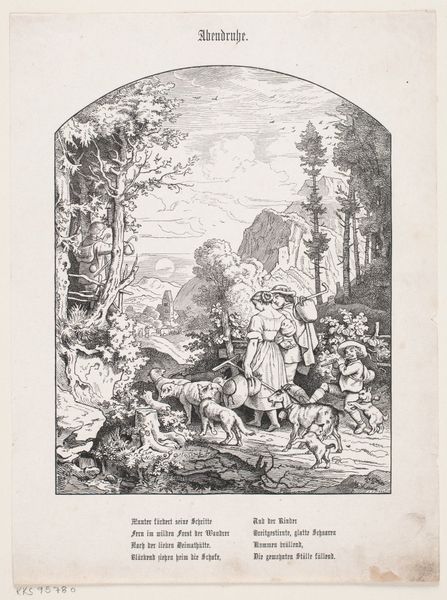
Dimensions: 117 mm (height) x 91 mm (width) (bladmaal)
Curator: This woodcut, "Heidenröslein," was conceived by Ludwig Richter and executed as a print by Wilhelm Obermann sometime between 1830 and 1896. Its current home is the SMK, Statens Museum for Kunst. Editor: It strikes me immediately as evocative, almost dreamlike. The monochrome palette, coupled with the delicate line work, produces a romantic ambiance. There's a certain crispness and precision, especially in how light and shadow play across the figure. Curator: Absolutely. The Romantic movement prioritized emotion and individual experience. Note the intricate layering created through woodcut—cross-hatching builds areas of dark to create mass. Consider the figure's placement, dominating the pictorial plane with this rather sensuous attention to the act of pulling on the branch. Editor: It’s interesting to consider the manual labor inherent in creating a woodcut. Each line meticulously carved. And in this piece, it produces a narrative scene steeped in idyllic leisure. Note the lovers in the far left background—they offer context, providing narrative hints while acting in contradistinction to the primary character in the composition. Curator: The sharp delineation of forms, almost like an illustration from a book, underscores its function. It’s the image acting as an emissary, an example of Romantic themes distilled into its most potent symbolic forms. Consider, too, that the rose and figure become aesthetic, semiotic markers representative of a certain mood, each referencing literary conceits common to the day. Editor: Indeed, "Heidenröslein", referencing the well-known poem by Goethe, speaks to broader social access to both fine art and the poetic form, made manifest by the mechanical reproduction of prints and broadsheets. By emphasizing themes from literary narratives of its day, it allowed audiences to contemplate idealized scenarios far from the everyday working experiences. Curator: Seeing the interplay between the Romantic ideals and material execution provides unique insight, one grounded in semiotic exchange that also speaks to a tangible making practice. Editor: I find myself seeing new details—how process and theme coincide and, perhaps more compellingly, create new connections between the everyday individual and the artist's ideals.
Comments
No comments
Be the first to comment and join the conversation on the ultimate creative platform.
